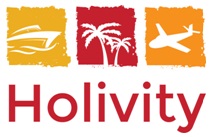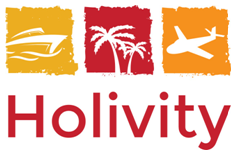Adventure week in Romania - Bucharest, Sinaia, Brasov, Bran and Zarnesti
Introduction
In south-eastern Europe, Romania is best known for the forested region of Transylvania, ringed by the beautiful Carpathian Mountains which cross Romania from the north to the south-west. It boasts preserved Medieval towns, fortified churches and castles, including Pele’s castle in Sinaia and Bran castle a little further north. The capital, Bucharest, is the largest city with a population of around 2m people. Following World War II, under the occupation of the Soviet Army, Romania became a communist country and many properties were taken into state ownership. It was clear from talking to locals of a age who could remember these events that it was a difficult period - understandably property-owners were relieved to re-take ownership of their houses after the 1989 revolution. With GDP of around 10k EUR per capita, Romania is not an emerging market but does have a 7-10 year development lag over other Central and Eastern European countries and is around 35 years behind OECD countries, which is evident as soon as you venture beyond Bucharest and the more touristic parts of the major cities.
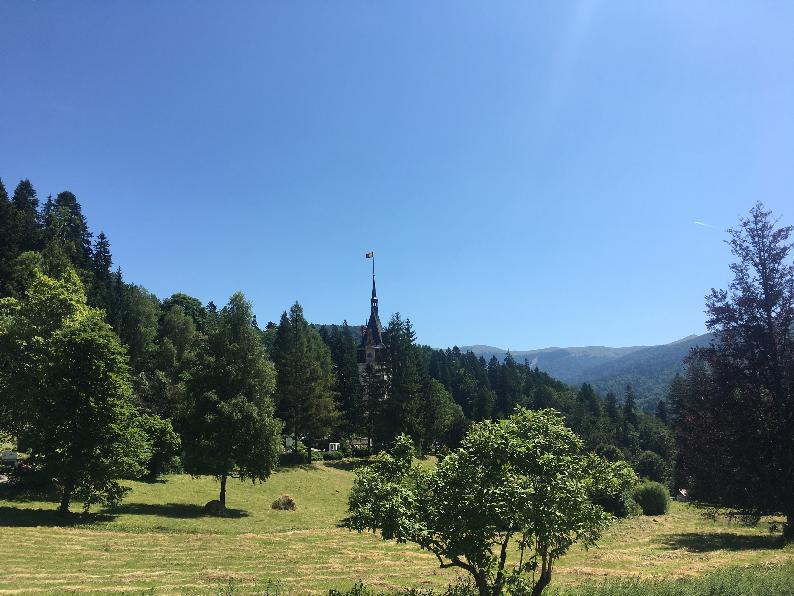
Cost of Travelling to Romania and the People
We travelled to Romania for one week in early to mid July. As Romania is not exactly the tourist destination of Europe, there were around the same number of native Romanians returning home from London as there were Brits visiting Romania on holiday. One group of lads on our flight definitely had the right idea for a cost-effective stag do - a pint in Bucharest costs 8 Romanian lei, about the equivalent of £1.50 - and if you book the flights far enough in advance & don’t mind travelling with Ryanair the air fare isn’t exactly expensive either. We sat next to a native Romanian, Matty, now living and working in London. He was a fair reflection of most natives we met whilst travelling - really friendly and helpful, a genuinely down to earth guy. Matty was happy to share with us details for the best places to visit and food and drinks to try - tips which came in useful both for our visit and for this article.
Driving in Romania
If you’re hiring a car in Romania from Bucharest’s Henri Coandă International Airport in Otapeni we recommend allowing plenty of time for the pick-up. Even if your rental agent is advertised as being in the terminal building, you’ll need to get a free shuttle bus to the location of your vehicle which together with registering and document checks took around an hour. We immediately travelled north from Bucharest to Sinaia. After getting to grips with driving on the right, we were able to take in the miles of beautiful sunflower fields that line parts of the route. A quick note on driving in Romania - local drivers can be incredibly aggressive (e.g. driving close to your bumper when driving to the speed limit on a single carriageway) and car insurance applies to a vehicle rather than an individual. Some of the overtaking manoeuvres you’ll see from the locals are pretty special and Romania has the highest road traffic fatalities in Europe - it’s definitely worth driving with caution and looking out / making allowances for a few lunatics.
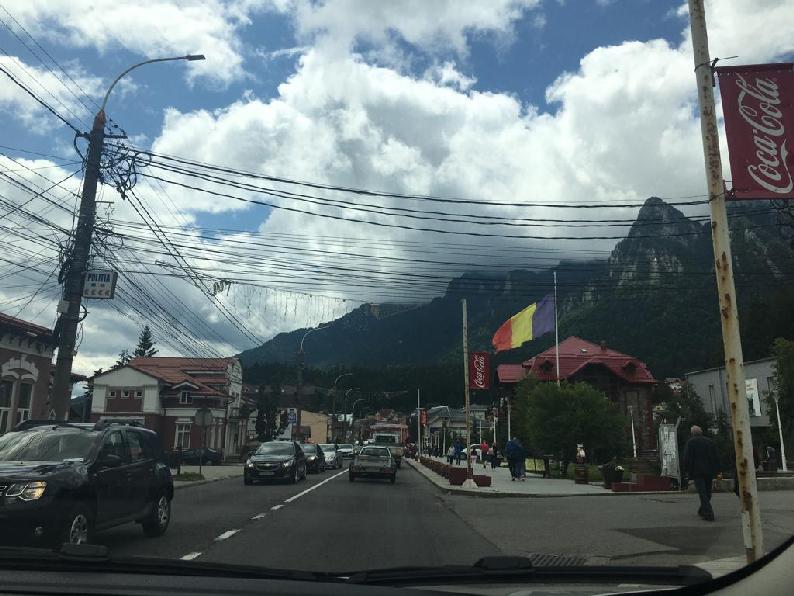
Day 1 - Pele's Castle and Carpathian Mountains in Sinaia
Nestled at the foot of the Bucegi Mountains in the picturesque town of Sinaia, Pele's Castle is a masterpiece of German new-Renaissance architecture, considered by many one of the most stunning castles in Europe. Built between 1873 and 1883, it has 160 rooms featuring a mix of architectural styles in different rooms, ranging from relatively simple Saxon styles to the very ornate and intricate. No expense was spared when the castle was built - look out in particular for the ornate mahogany spiral staircase, beautiful glass ceiling in the atrium area shortly after you enter, Murano crystal chandeliers and German stained-glass windows. Another highlight was the King’s armour collection from 1906 including horse armour weighing 70kg. The King had to abdicate during the Communist takeover in the 1930s.
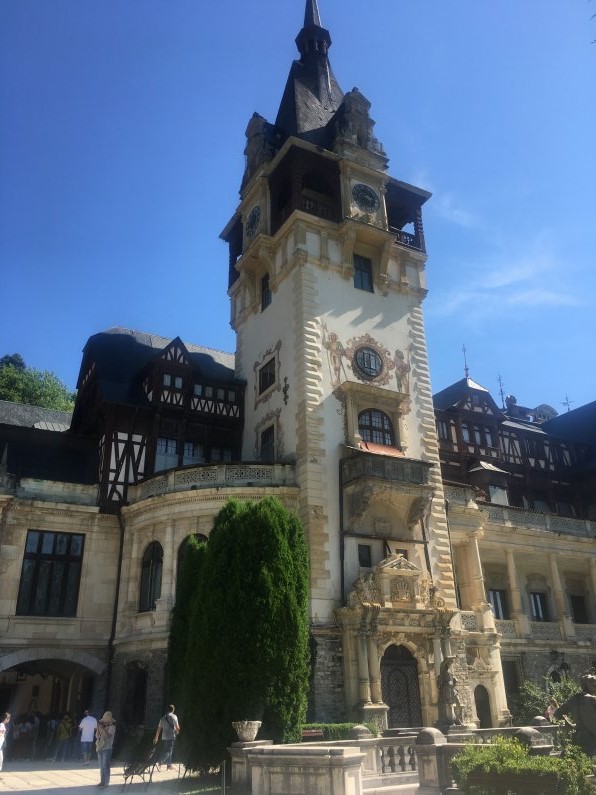
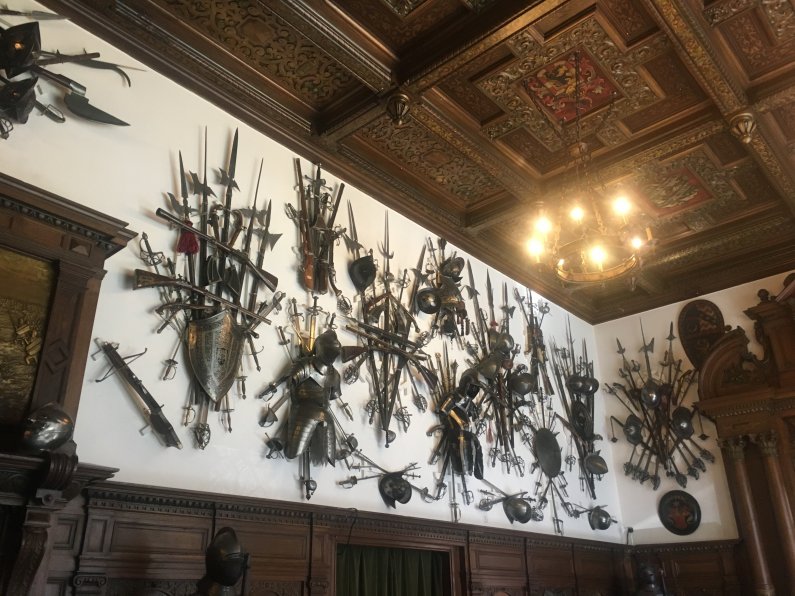
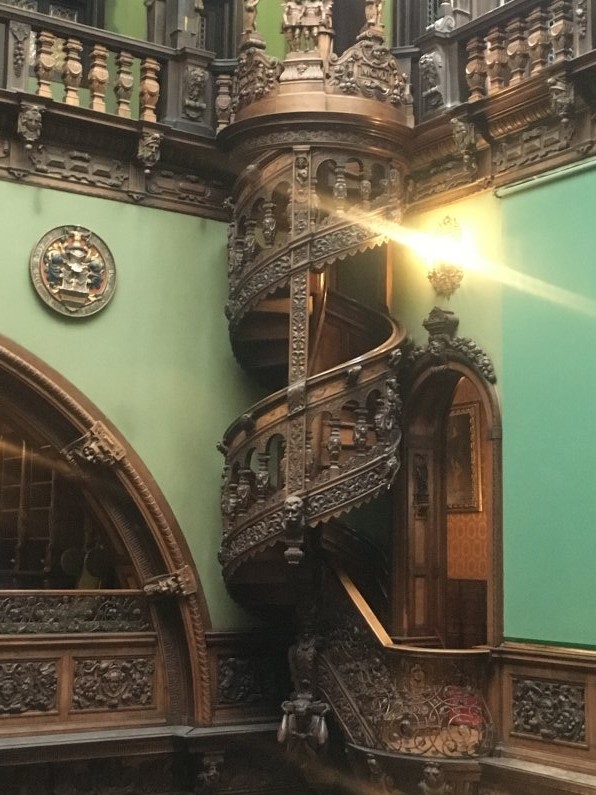
The full Pele’s castle tour covering three floors costs 60 Lei (£12) each, compared to 50 Lei for the ground floor. In our opinion it is definitely worth paying the 10 Lei extra to get a tour of the second and third floors of the castle as well. Most people don’t do this which makes the final part of the tour much quieter and more personal. For the ground floor part of the tour there are about 50 people in each tour group which, whilst a necessity given the demand, makes it very crowded. The full tour takes about 75 minutes. From the outside you can tell parts of the castle are felling into disrepair and the tour guide basically told us that the current owners (who rent it out for the tours) don’t like putting their hands in their pockets for maintenance and upkeep. This seemed a grave shame given the history and character of the building. Whilst the tickets are not expensive the through flow of visitor entry fees could easily cover some upkeep for the place.
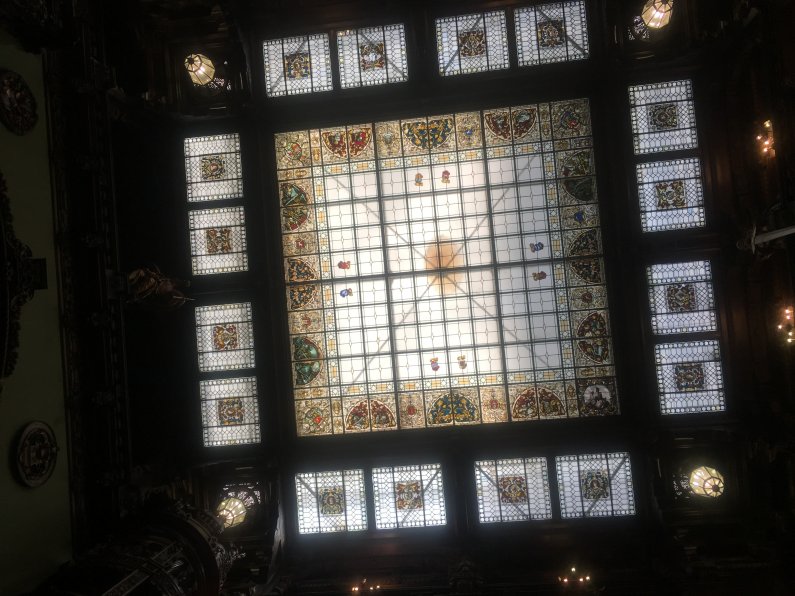
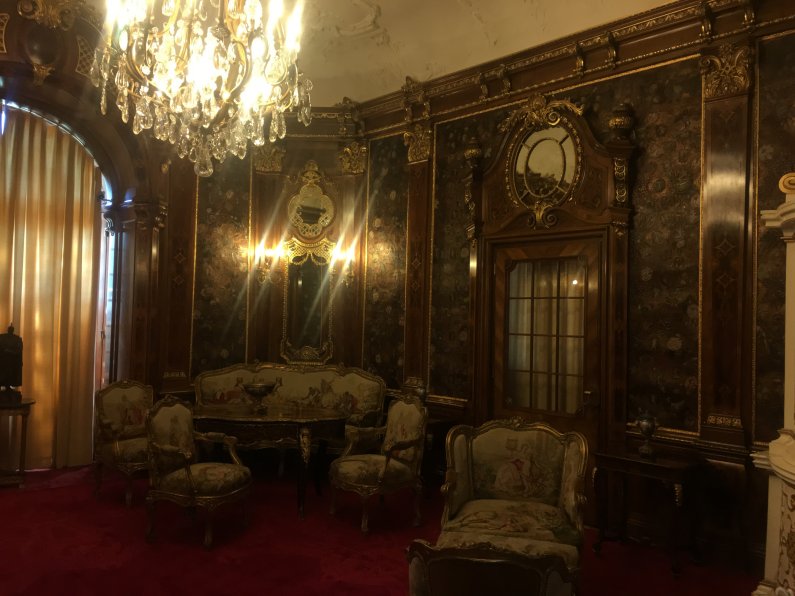
Next, we took the Sinaia gondola up the Bucegi Mountains from 1,000 feet to 2,000 feet. The gondola is much better than the funicular as it is max 6 people to a gondola and most of the time if you’re travelling as pair/couple you’ll be able to get a gondola to yourself, making it less crowded and more relaxed. There are a number of well-marked routes from the top of the gondola around the mountains, including one to the Sphinx rock formation. Allow 4 hours for the round trip to the Sphinx and back, which assumes a medium pace, not too many stops and allows 20 minutes or so to look and take pictures with the Sphinx at the top. The final section back to the gondola at the end is very steep so be sure to allow plenty of time ahead of the last gondola back down at 5:30pm.
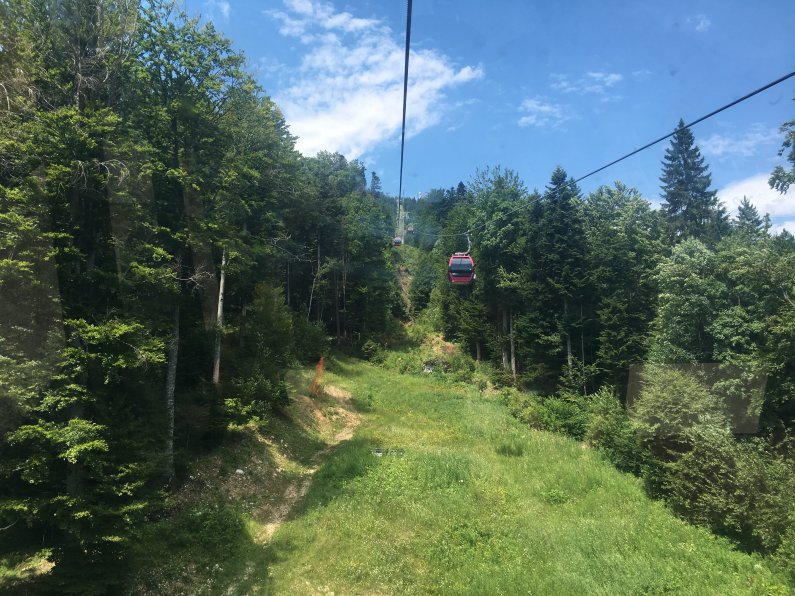
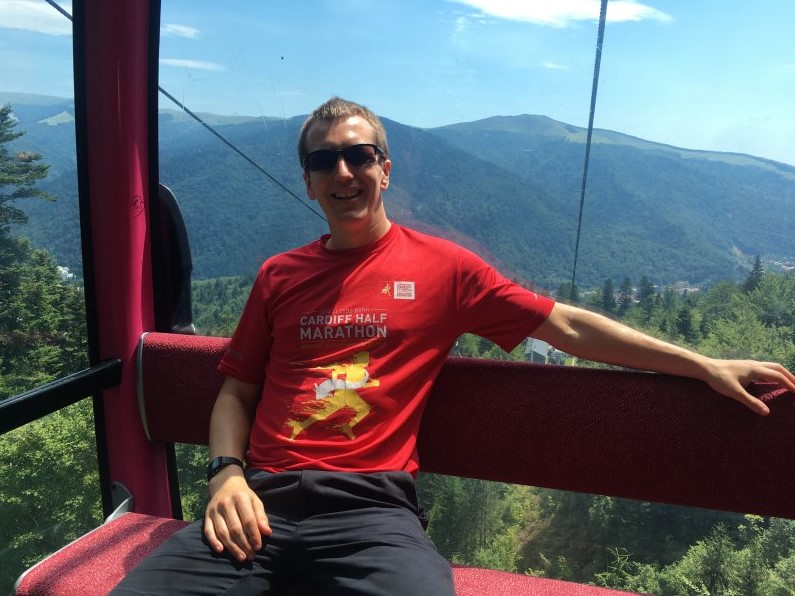
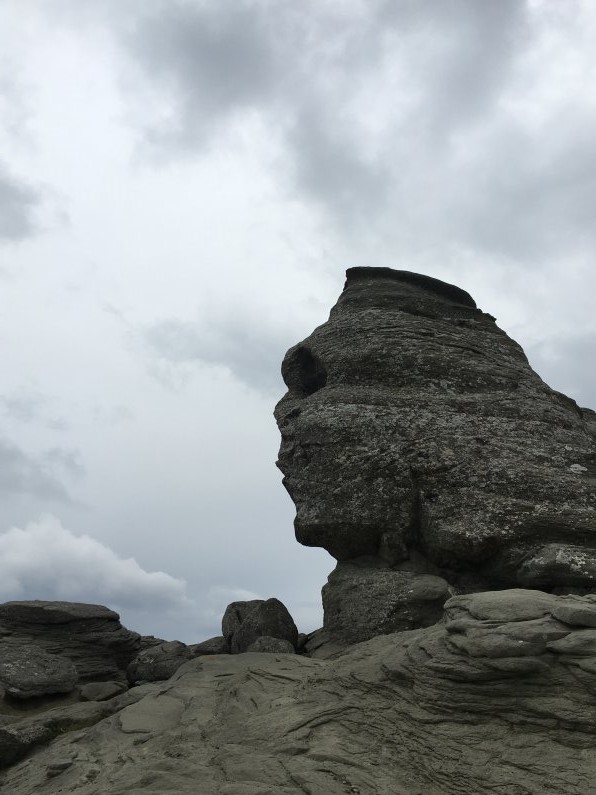
Finally, we would recommend a quick visit to the Sinaia monastery, either on the way to Pele’s castle or on the way back. You will see orthodox worshippers cross themselves as they enter the church then kiss the picture of Mary in the nave of the church. When we visited carol singers were in full tune and it was fine for a visitor/tourist to listen quietly.
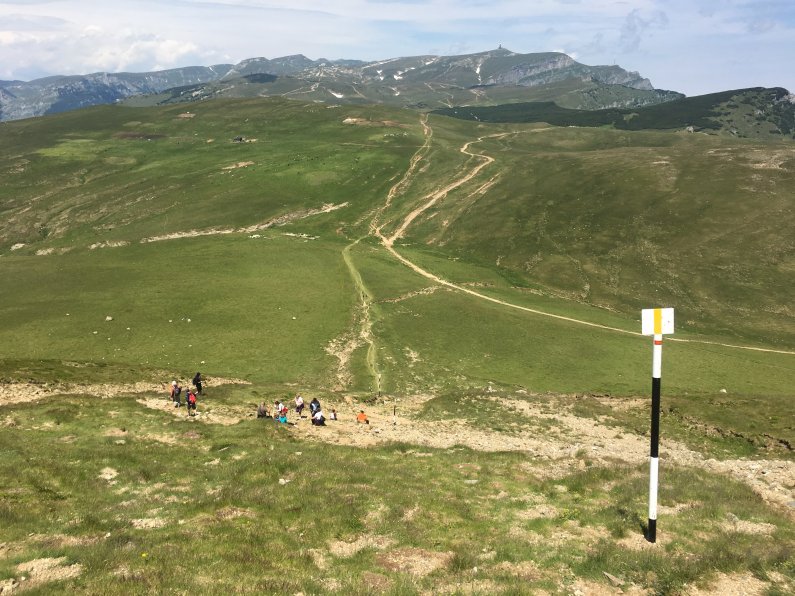
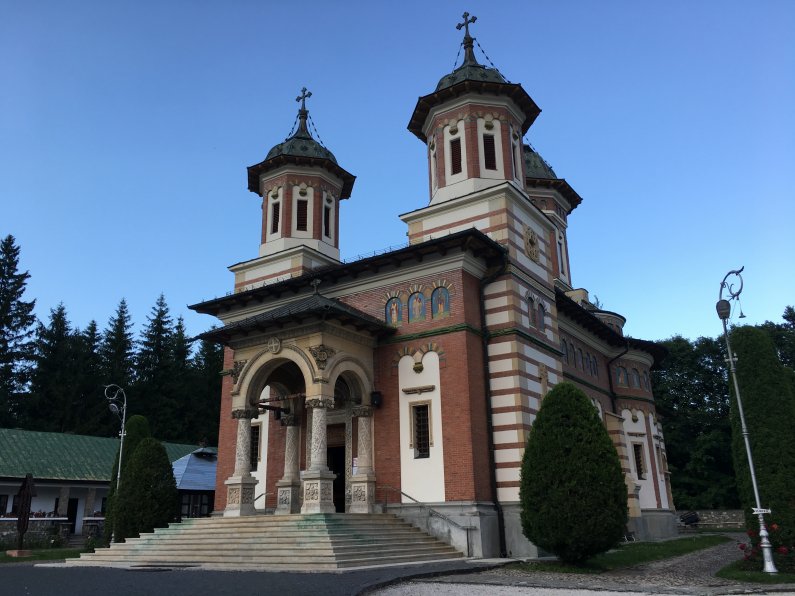
Day 2 - Brasov Spa Day
We spent our second day at the Belaqva spa in Brasov which was a luxury experience and our special treat for the week. There is a nice wet spa area comprising pool, jacuzzi, steam room, sauna, ice room, solarium, tropical showers, relaxation room and plenty of loungers/seating areas. We both came out saying that our treatments (deep tissue massage and ‘Wonderful Life’ comprising of body scrub, massage and facial) were the best we’ve ever had by far. Spa entry was 100 lei (£20) with treatments around 250 lei (£50) per hour, depending on the treatment.
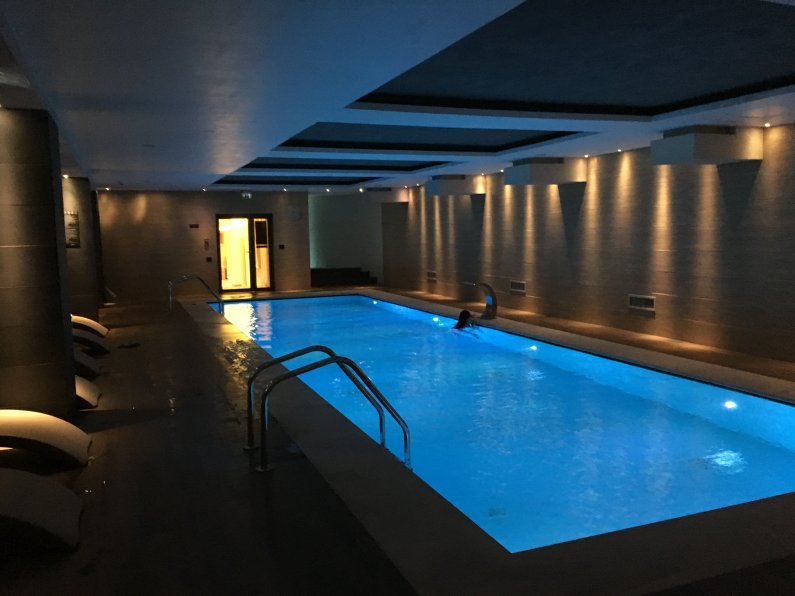
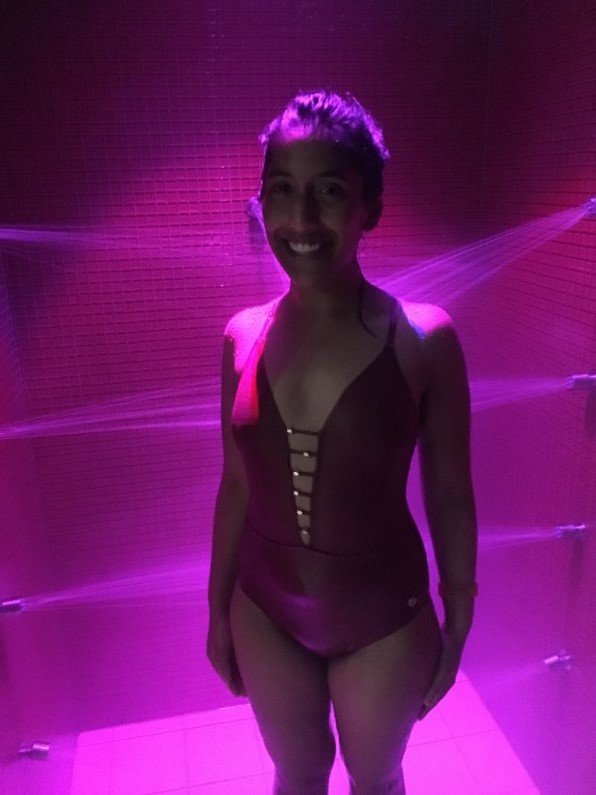

Day 3 - Brasov Walking Tour
On day 3 we had breakfast at Bistro de l'Arte about 100 metres off the main square in Brasov. We would highly recommend the hot chocolate in particular if you have a sweet tooth - more like melted chocolate in a cup than a hot drink, similar to what we’ve had in Rome in the past. This set us up for an interesting and very well-presented free walking tour which meets by the fountain in the main square at 10:30 every day. Whilst on the square, our guide Anne told us about the 39 different trades or ‘guilds’ the poorer families in particular would aspire to get their children into. Guilds not only taught them a trade but also helped with their education, taught them manners etc. Buildings on the square have 3 floors - the ground floor was used as the traders workshop, first floor living quarters and second floor for storing their products. There were different sections around the square for different trades - e.g. butchers, cobblers, fish and so on. The main square used to be on a major trading route which allowed the local authority to charge a 30% tax on all profits the traders made. Each trader visiting Brasov could also only stay for a maximum of 3 days to create space for other traders wanting to visit.
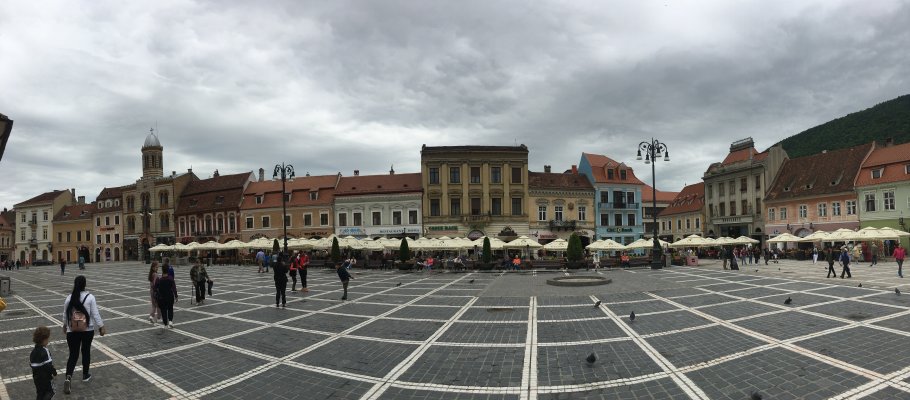
Adjacent to the main square is the Black church. The Black Church was built by the German community of the city and stands as the main Gothic style monument in the country. When visiting you’ll notice there are holes in the stone bricks of the church allowing them to be lifted with a metal bar through the hole, which took the effort of 6 men. It is called the black church because it was impacted by a fire when the invading Habsburg army took over the city. The army leaders told the army to return home after invading. As the army men on the ground were frustrated they’d travelled so far for nothing, they started a fire which spread quickly and destroyed one-third of the city. After the fire, Brasov citizens realised the back to back houses creating fortified walls was good for security but bad for fires spreading and getting firemen to attend to the fires quickly, so they created narrow streets like roper street to solve this issue for the future.
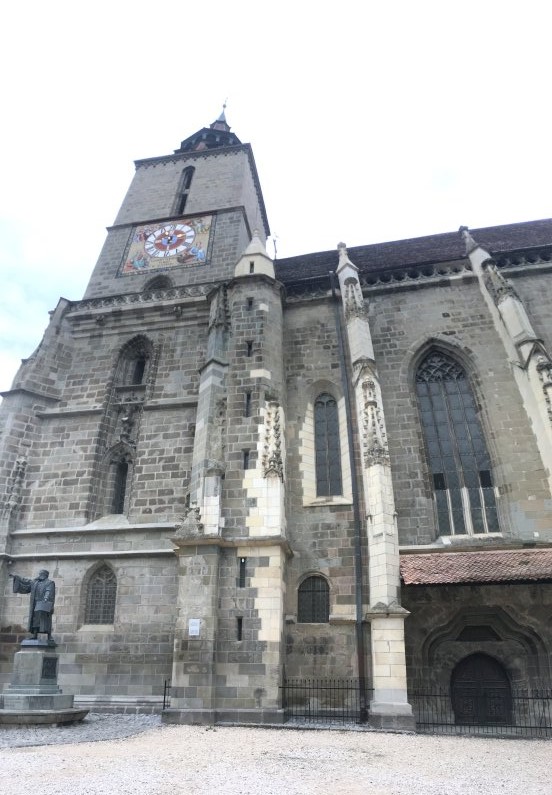
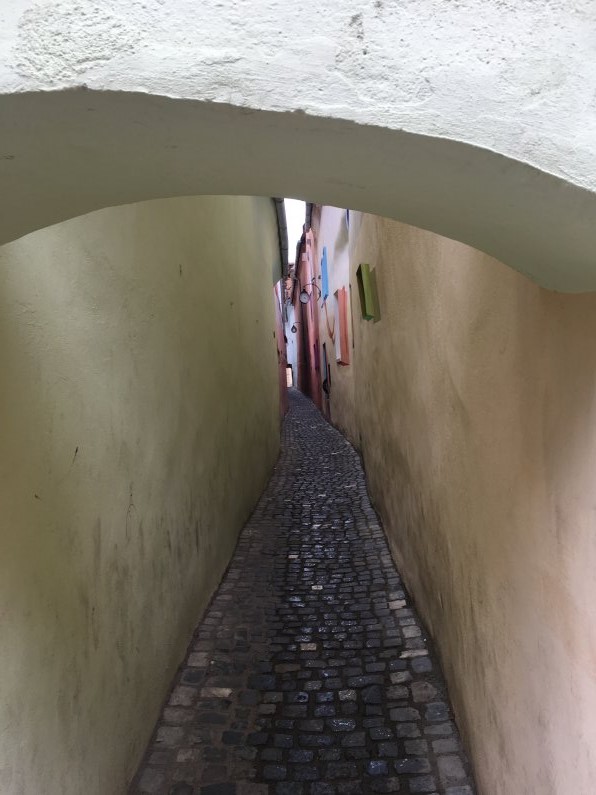
Anne told us more about the way the Soviets took control of people’s houses and moved additional people into them where their calculations showed there was enough space during the communist occupation. Post the revolution, other Eastern block countries allowed owners to take their houses back again only if they were not being used for living by someone else. If someone else was living there, the original owner was given a monetary amount to reimburse them. In Romania, homes were returned to their original owners regardless which resulted in everyone suing each other, with many of the court cases still running today, 30 years later. For the final part of the tour we exited the Saxon part of the city (inside the city walls) through Katherine’s Gate to see the square of the old Romanian part, which is much smaller. Native Romanians apparently used to live hidden in the hills as they did not have the same level of protection by the state as that afforded to e.g. Hungarians living in Brasov.
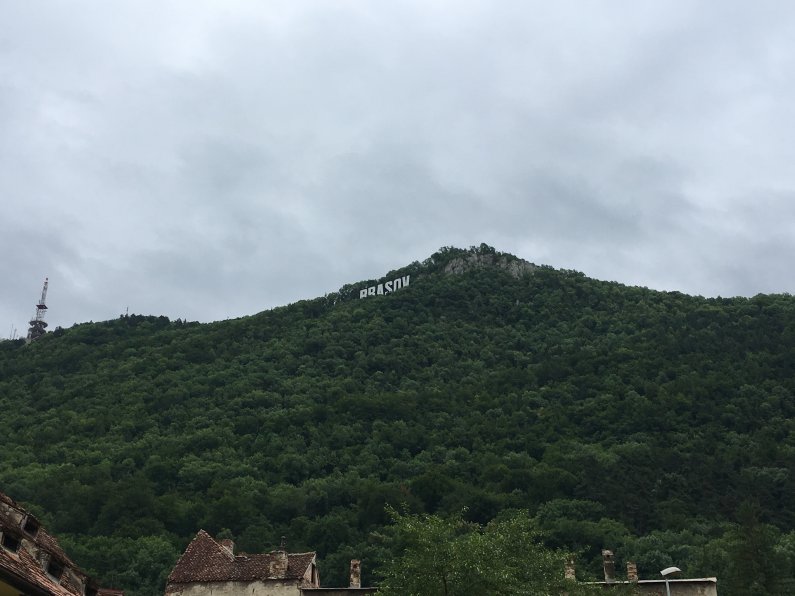

Following the walking tour we walked up Tampa mountain, a nice trek of around one hour from the base to the summit with the option of taking the cable car back down again from the top.
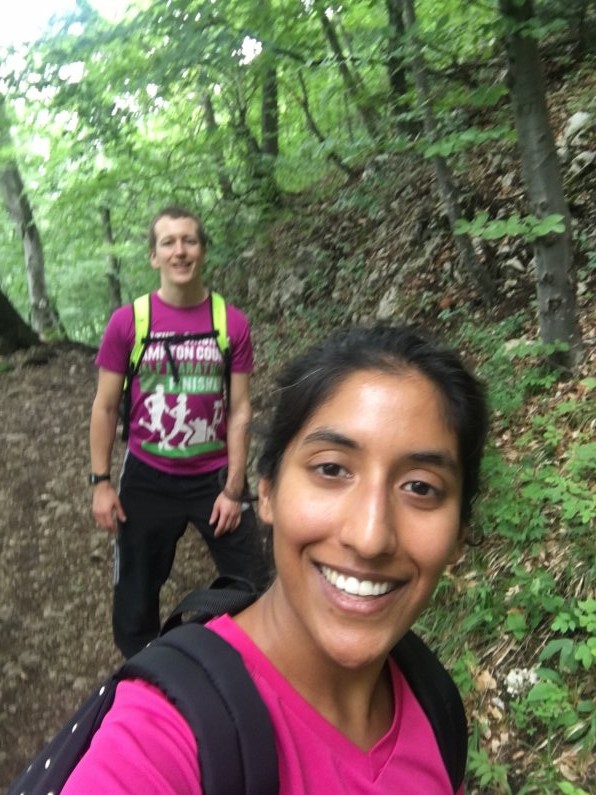
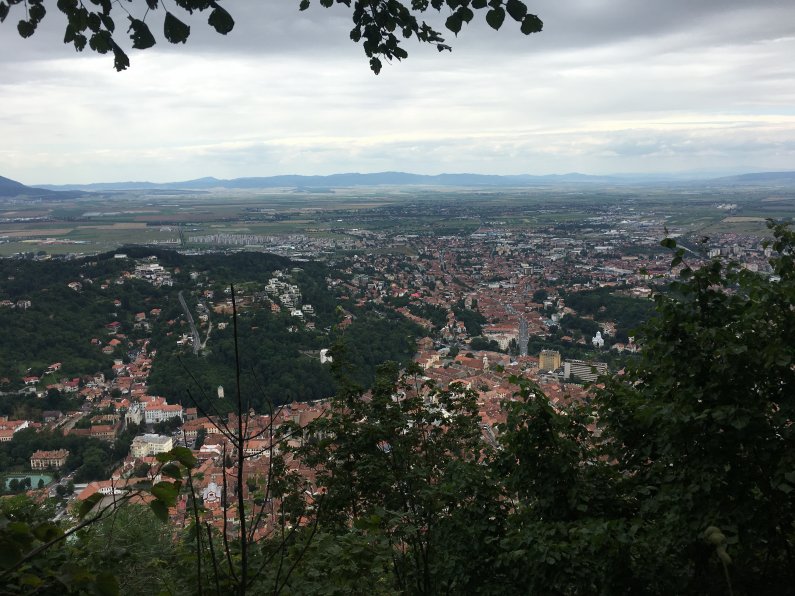
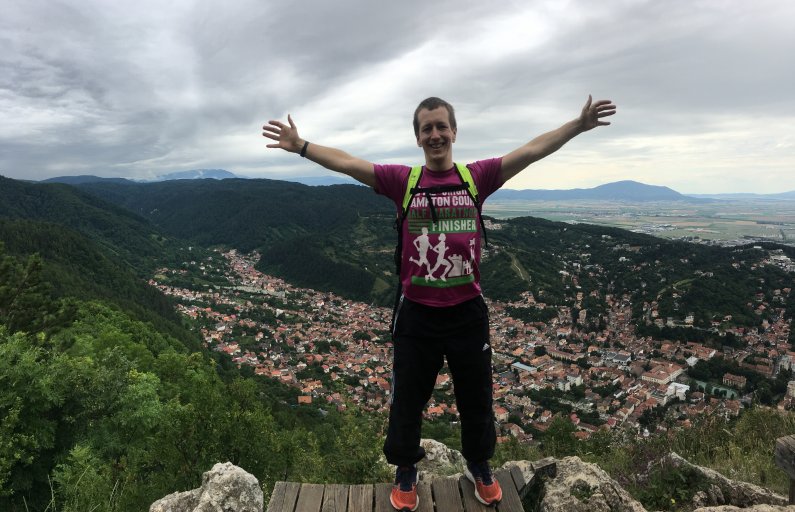
Day 3 was wrapped up with a bear watching excursion organised by a company called Active Romania. This involves a 20 minute minibus transfer from the centre of Brasov into the mountains where the bears are known to live, including a final 5 minutes off-road in 4x4s on rough terrain. This was a good way to see the bears up close in their natural habitat (although the Zarnesti bear sanctuary commented on later is better if you’re able to visit there as well / instead). The experience is necessarily a bit contrived (food is put out for the bears and guests sit in a hut behind plastic windows so as not to scare the bears away) but we thought this was to be expected and frankly the bears wouldn’t have been there otherwise! The guides were very happy to share their knowledge about the bears.
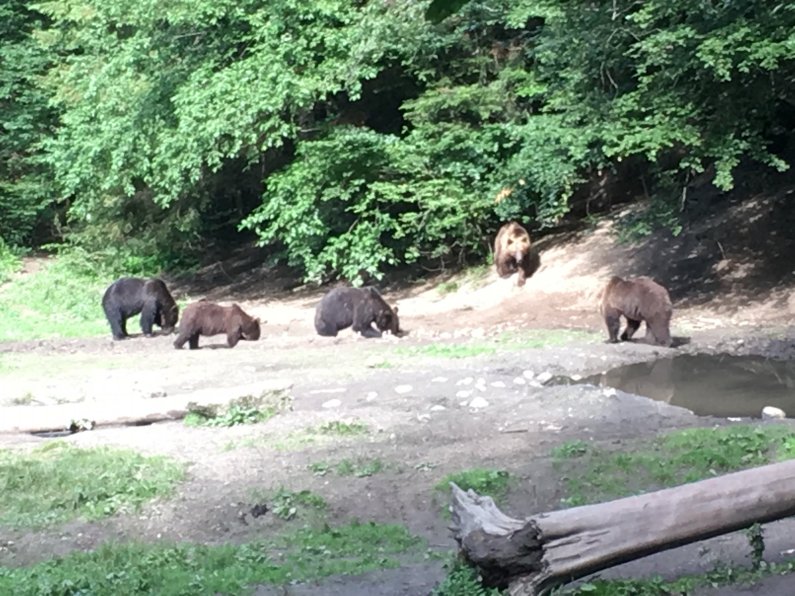
5 interesting facts about brown bears:
- Brown bears are solitary animals who live alone. They have a hierarchical structure which was clear when they were feeding - if the alpha male is eating, he does not let other bears enter the eating pit at the same time - and the other smaller bears are too scared to approach.
- The way to tell the difference between males and females is that males have longer limbs and snouts than females. Males are larger when fully grown too.
- Fully grown adult male bears weigh up to 250kg. In theory their frame stops growing at age 10-12 but in reality they keep getting bigger until they are around 15 years. Brown bears can live up to 20 to 40 years.
- The breeding season runs from May to early July. Male bears are promiscuous and will even kill very young cubs to get the females back into heat again. They do this indiscriminately, i.e. without knowledge of whether it’s their own cubs or not. As your guide politely put it, the male bears are “only in it for the sport”.
- Bears shed their fur/moult a lot. When we visited a number of bears were scratching themselves against trees to accelerate the process.
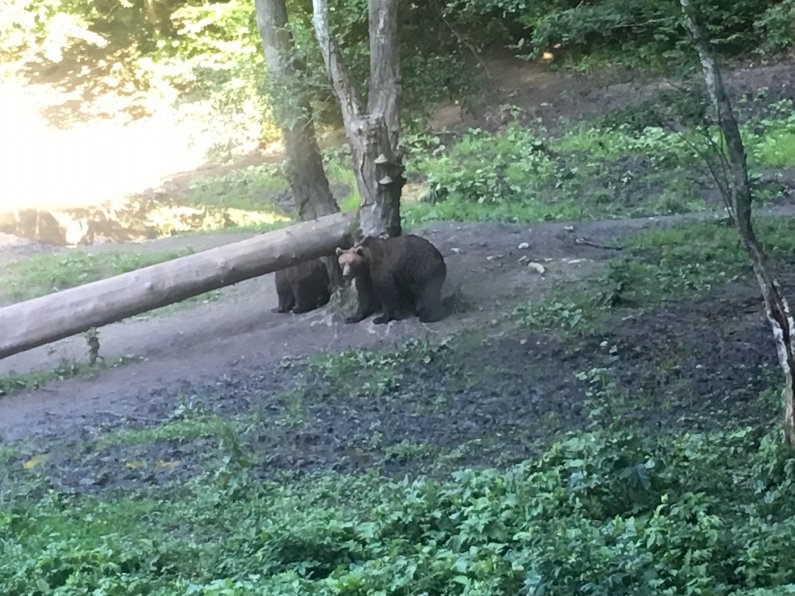
Day 4 - Rasnov Citadel and Bran Castle
On day 4 we visited Rasnov Citadel and Bran castle on the way to our Conacul Bratescu (Bran) accommodation for the evening. Car parking spaces at the citadel can be hard to come by - we were glad we got there fairly early to beat the rush. At the bottom of the hill there are trains taking people up to the citadel but it’s only an 8 minute walk on foot so if you’re able we would recommend walking up he hill instead. Tickets to the citadel are 12 Romanian lei (about the equivalent of £2.50) with additional activities like archery and axe throwing available inside the citadel from 5 lei. The citadel is fairly small and largely in ruins - you’ll want to allow about an hour for the total visit and expect to spend 45 minutes in the citadel itself. Be sure to climb the watch tower immediately after the entrance for a bit of military history on posters and a good view from the top. Rasnov Citadel was a good way to kill an hour for us and provided a stop off on the route we were doing anyway but if you are short of time and needed to scratch something from your schedule in Romania this would be the one to leave out.
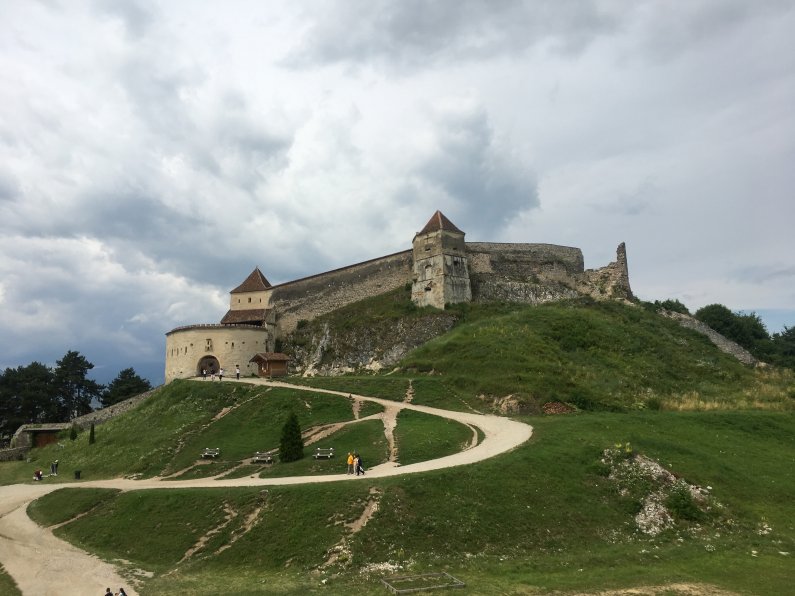
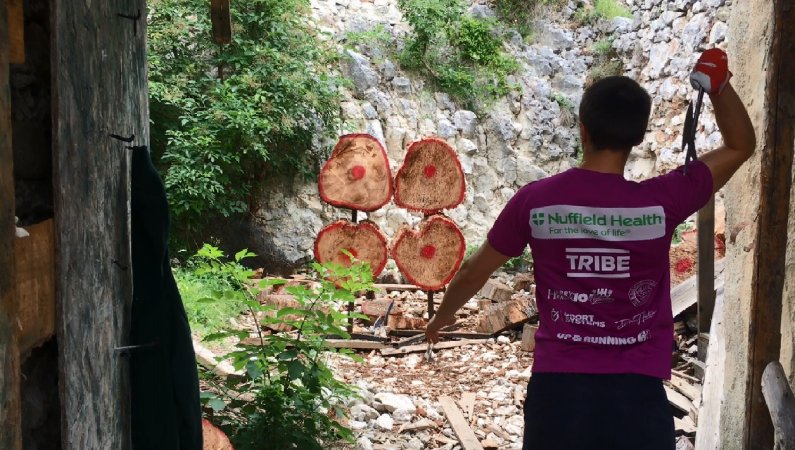
Bran castle is positioned on the rocky top of a hill on the Transylvania side of the historic border with Wallachia. Because Bran Castle is the only castle in all of Transylvania that (some argue loosely) fits Bram Stoker’s description of Dracula’s Castle, it is known throughout the world as Dracula’s Castle, although in reality the link between Stoke’s novel and the castle is a bit tenuous (the author had never been there for a start). The castle is now a museum dedicated to displaying art and furniture collected by Queen Marie of Romania. Tourists can see the interior on their own or by a guided tour. It has 100 rooms today and was built up and expanded over time. In 1438–1442, the castle was used in defense against the Ottoman Empire, and later became a customs post on the mountain pass between Transylvania and Wallachia. It is believed it was built almost exclusively for fortification and protection of German colonists in Transylvania. At the bottom of the hill is a small open-air museum exhibiting traditional Romanian peasant structures (cottages, barns, water-driven machinery, etc) from the Bran region.
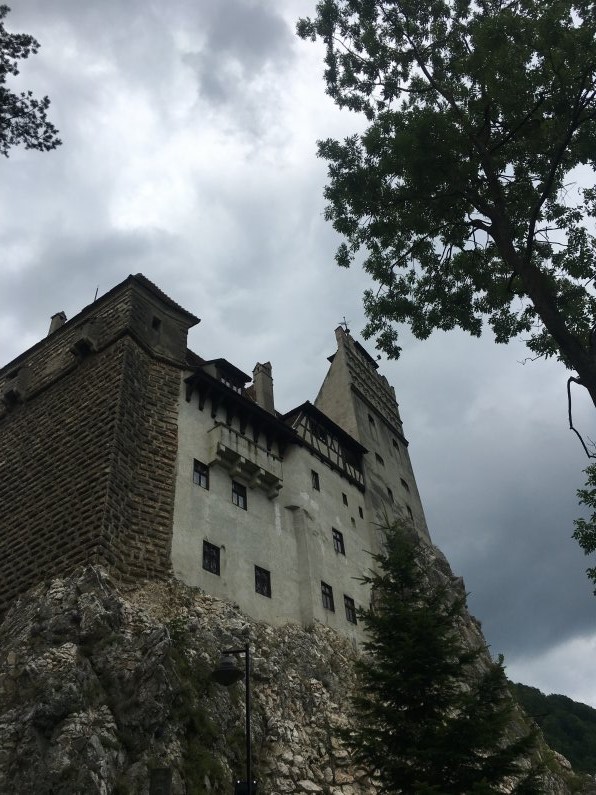
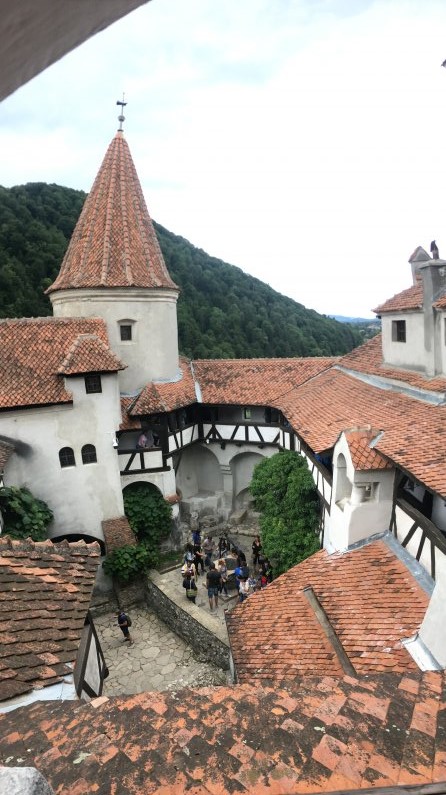
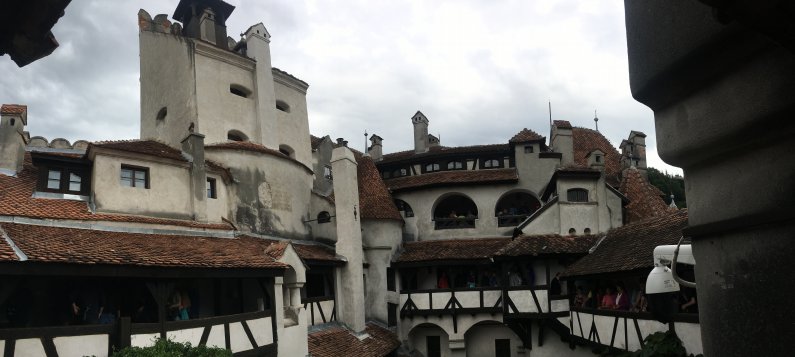
For the evening we stayed at Conacul Bratescu, a traditional Romanian Inn (the name translates as the “mansion” of the area. The inn has generously apportioned rooms decked out in old-fashioned Romanian style. The staff were excellent - very friendly and attentive. There is a small restaurant on the ground floor where there are also a number of traditional Romanian items such as a piano, clothing and a pretty good wine selection. Conacul Bratescu provides a good mix of modern and traditional food so if (like me) you’re not so adventurous with food & drink you won’t have an issue.
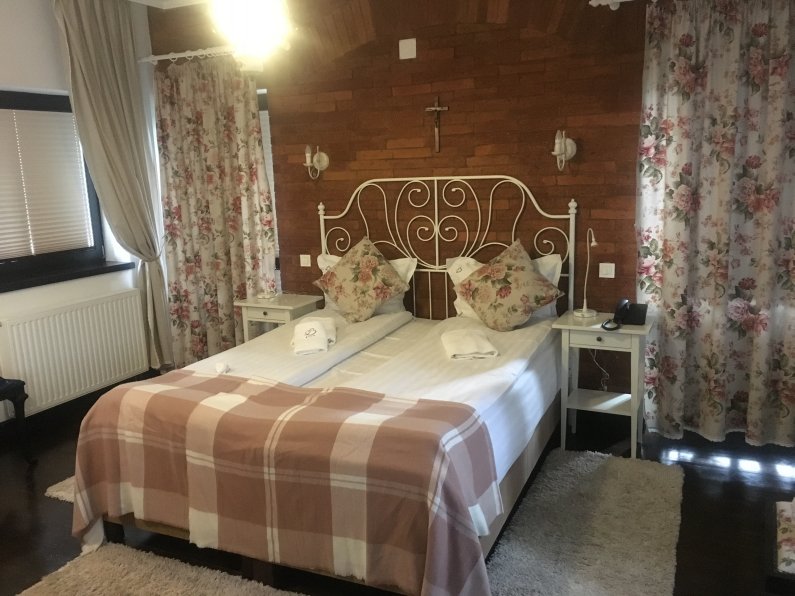
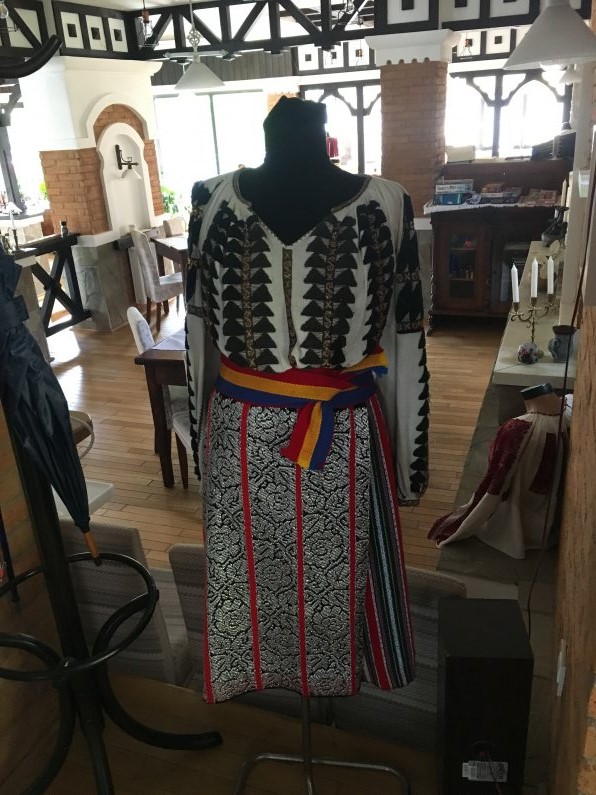
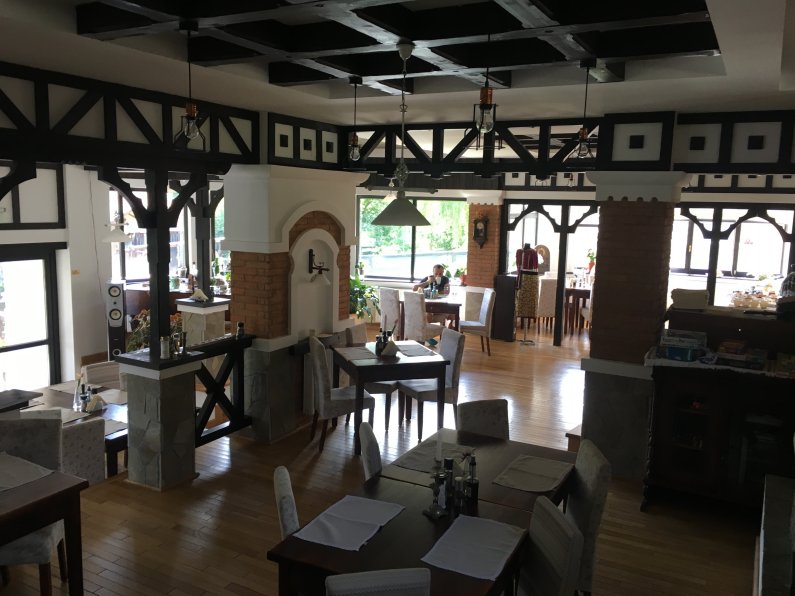
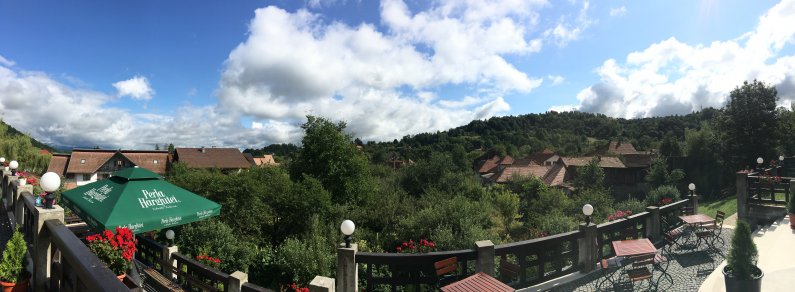
Day 5 - Cycling in Zarnesti
On day 5 we hired mountain bikes and cycled through the Zarnesti canyon and through the countryside of surrounding Transylvanian villages. We hired the bikes from Rent a Bike Transylvania which has a few branches across the region. The one at Zarnesti is at the house of Alex and Anna with Anna’s brother Andrea also helping with the hiring. All three were amazing - really helpful in saving good quality bikes that were the right size for us and helping us set-up the bikes. Anna also talked us through a 25k cycling loop and lent us a map so we could self-guide. Guided tours are also available at an additional cost. I would recommend booking ahead / letting them know you are coming and giving them another call when you arrive so Alex, Anna or Andrei can escort you past the guard dogs in the garden! There is a fair bit of walking and a challenging scramble (carrying the bikes) as part of the canyon route that’s marked with red crosses - we probably bite off a bit more than we could chew with the route in hindsight. On meeting Alex and Anna we learnt they were past national multi-day team adventure racing champions - on reflection when I asked them whether the canyon was a moderate difficulty route and got the answer “moderate is a broad word” I probably should have taken the hint!
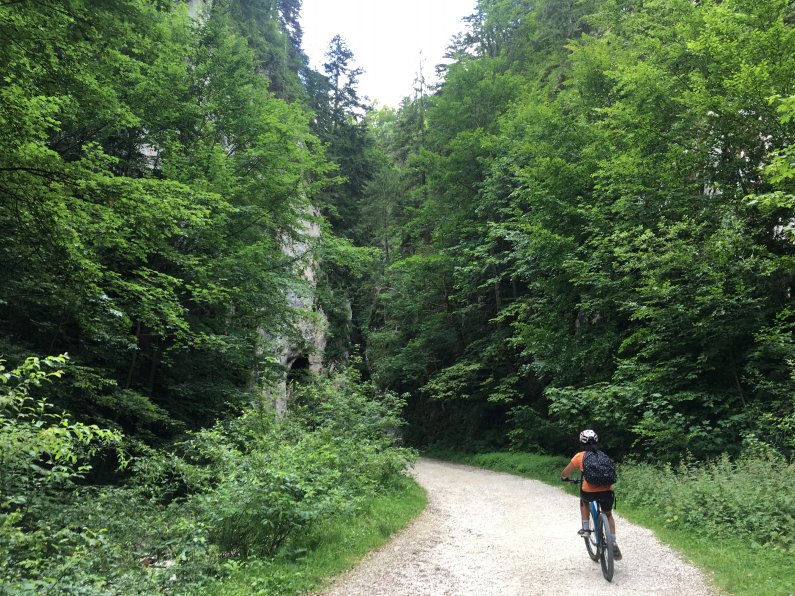
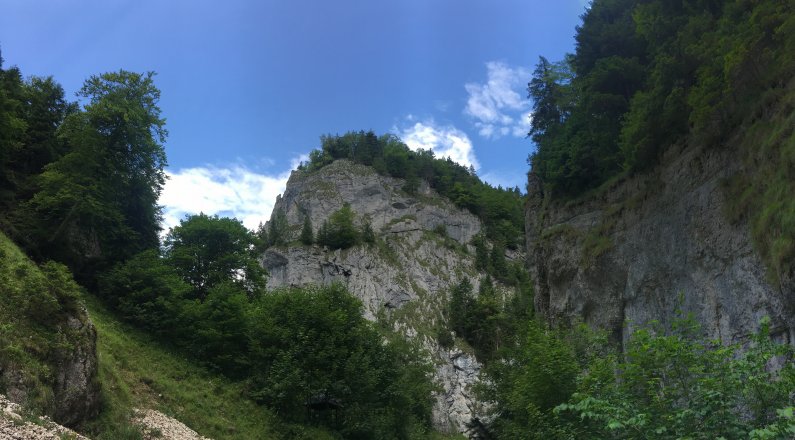
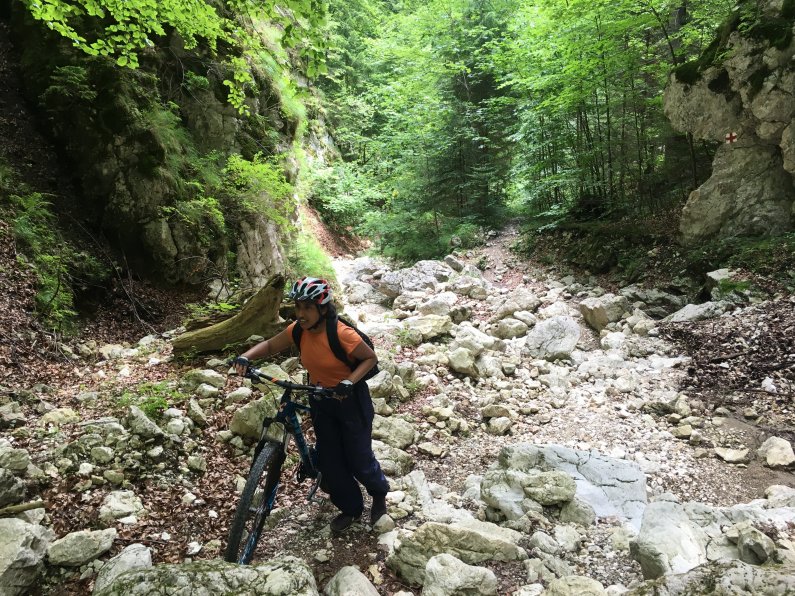
Day 6 - Brown Bear Sanctuary, drive back to Bucharest and Bucharest Walking Tour
Visiting the Zarnesti brown bear sanctuary was definitely one of the highlights of our tour. The group tours (available in different languages) are 70 Lei (£14) per person and we both felt it was actually a better experience than the trip to see the brown bears in the wild, which was much more at 45 EUR per person. The tour starts with a 8 minute video which tells the sombre story of a brown bear called Maya kept in captivity in the 1990s-2000s who became so depressed with her captivity that she started mutilating her own feet by biting them - effectively a means of bear suicide. Whilst she was taken into care by the now owner of the bear sanctuary, Maya continues to do the same and very sadly died of her injuries. This spurred the owner of the bear sanctuary (which is an NGO) to build the first enclosure of the sanctuary, which was finished in 2005.
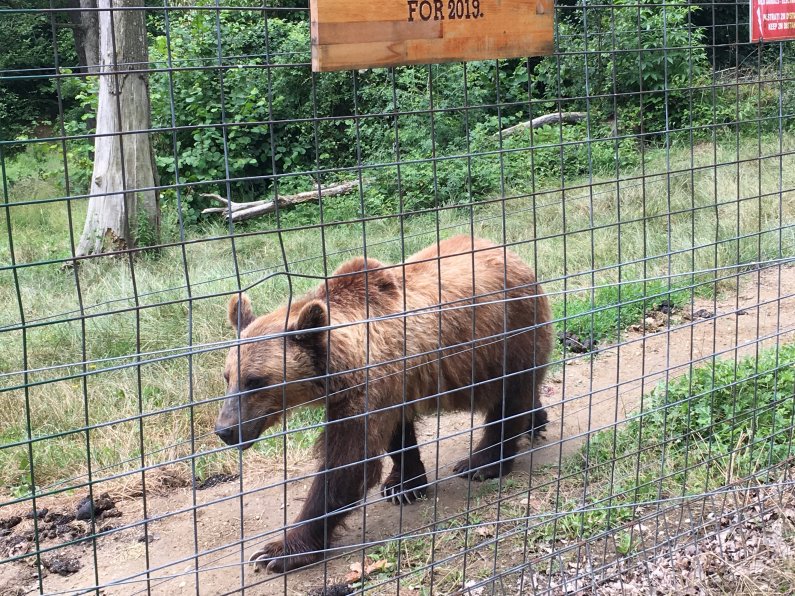
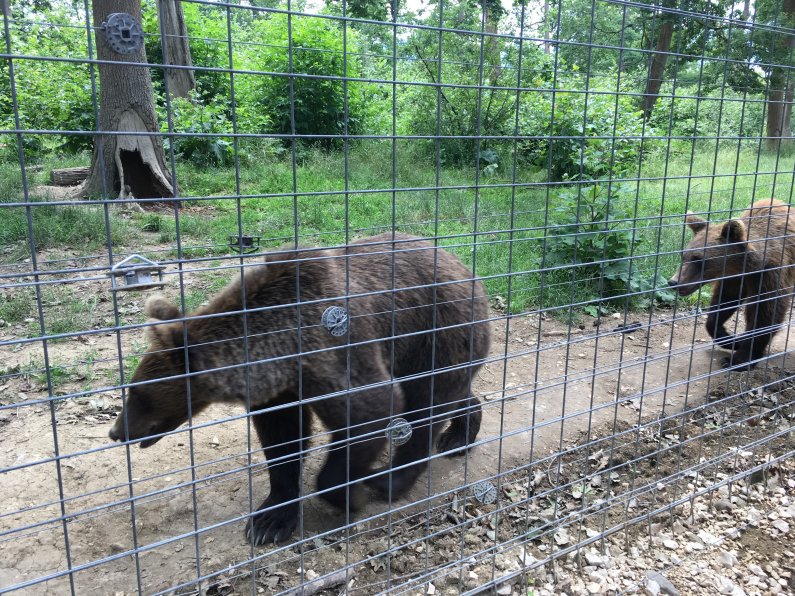
The big influx of bears to the sanctuary started coming after 2007 when Romanian law prohibited people from keeping brown bears and stipulated minimum indoor and outdoor space requirements that zoos had to provide them with. This meant the various hotels, petrol stations, garages and the like which had kept brown bears to attract customers could no longer do so. During the tour our guide, Valentino (Val), showed us an example of the type of cages the bears used to be kept in. The metal bars extended across the base of the cage. During the hot Romanian summers the bears would burn their feet treading on the metal slats which would get scorching hot in the sun - like people running across boiling sand on the beach in bare feet.
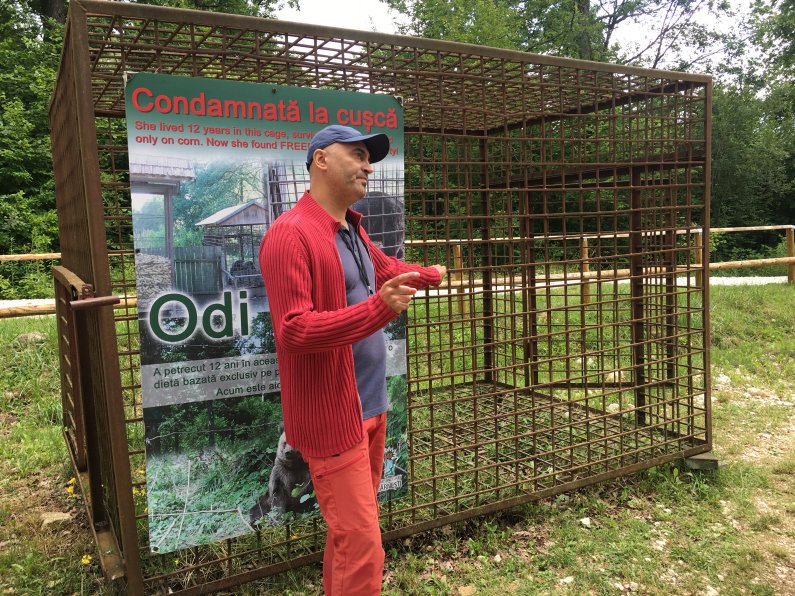
It was amazing to see the great work the sanctuary has done to improve the life of the bears, albeit tinged with sadness in the small minority of cases where bears had been permanently mentally affected by their ordeal. For example, Lydia, the first bear we saw, was still constantly pacing back and forth in front of the fence, as she would have done in the cage. You can tell the morale of a bear from the look in their eye and some never overcome their ordeals mentally. Thankfully, the vast majority of bears now feel relaxed - they are safe from predators (the electric fence around the enclosure is not only to keep the bears in but also to keep predators out) and fed every morning. There were around 120 bears when we visited compared to total site capacity of 150 bears.
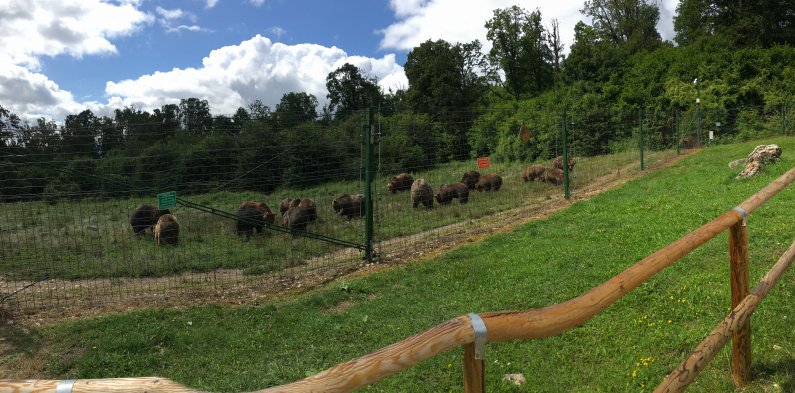
The most important piece of practical information for visiting the bear sanctuary is that it’s only open for 2 hours from 9-11am every day. This aligns to feeding time when the bears come out from the forested area in the centre of their enclosures to the fences around the edge, making them visible to visitors. The rest of the time the bears are left to their own devices and stay hidden amongst the trees. It was great to see the quality of life of the bears being prioritised above people’s desire to see them in this way - in stark contrast to how the bears were treated in the past. First and foremost, the site is a sanctuary for the bears; the tourist angle is entirely secondary, as it should be.
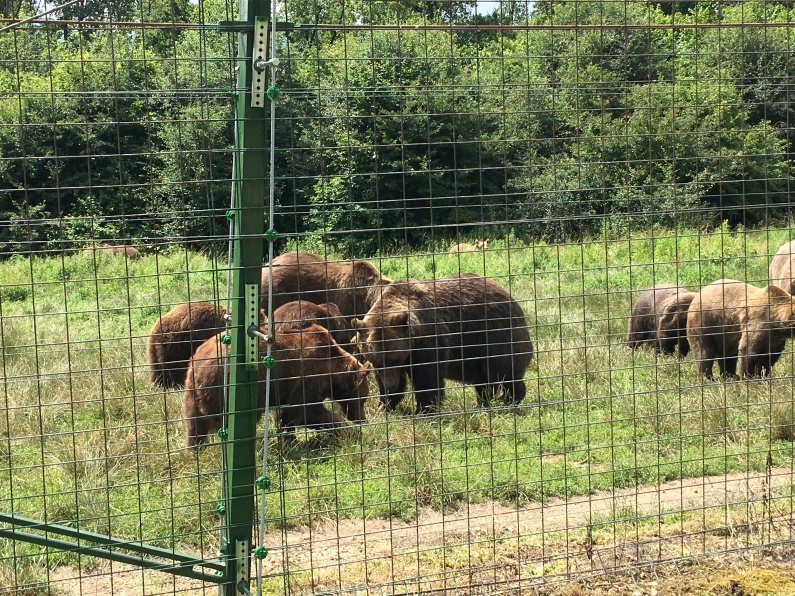
Next, we did the 3.5 hour drive back to Bucharest with a lunch stop at Sinaia. We had been warned that there would be lots of traffic on this route, which proved to be very true. All vehicles travelling from Bran to Bucharest have to pass through Busteni town. Busteni acts as a real bottleneck - traffic travels slowly through the town to allow for pedestrians crossing, people parking their car etc. This results in a queue up the mountain on the Bran side of Busteni which can extend to several km. It is similarly busy approaching Bucharest so allow more time than you’d think for the distance. Matty had told us of a time when he missed his flight from Bucharest to London due to the traffic - we figured that must be quite a regular occurrence.
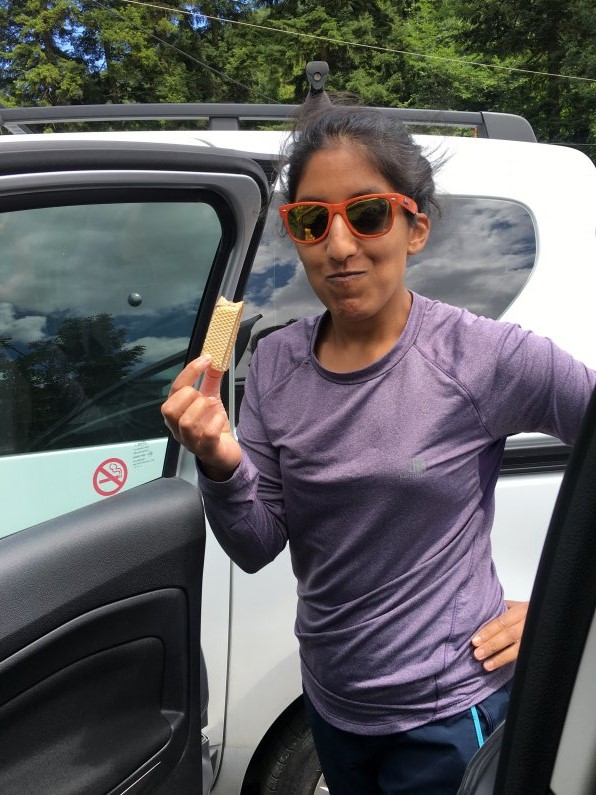
When back in Bucharest we did the free walking tour. Available across many European cities, these free tours (you give a donation at the end) have become a staple of our travels and a great way to orientating yourself upon arriving in a new city. Our tour guide Tudor was very engaging and shared tonnes of history with us, interspersed with funny anecdotes so it wasn’t too heavy going. We learnt about the communist leader Nicolai Chauchescu who ordered the building for the palace in Bucharest (now the parliament building). On Nicolai's instruction, one-fifth of the city, an area equivalent to the size of Venice, was destroyed to make way for the palace building and surrounding areas. Around 28 buildings including churches were moved to make space for the grandeur that the communist leader demanded whilst luxurious flats were built for his cronies in the area surrounding the palace - under communism, some people are more equal than others, of course.
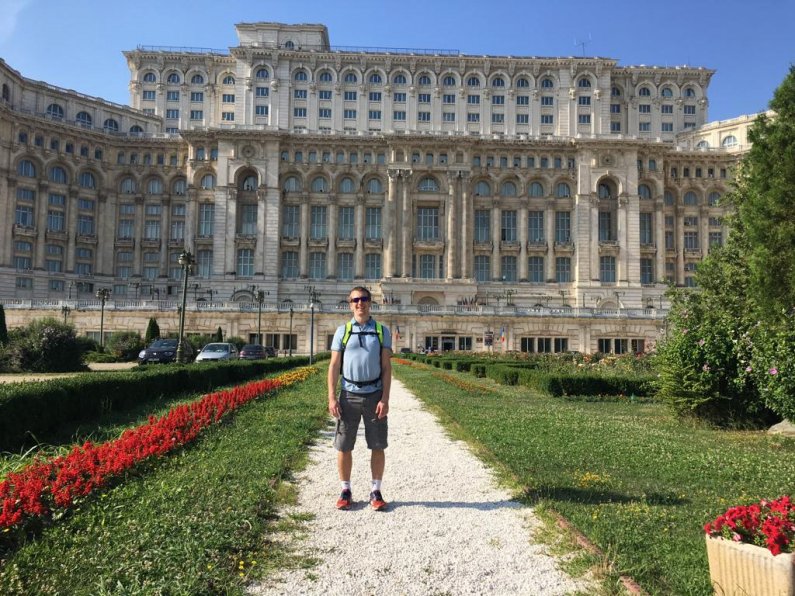
Nicolai was executed following the uprising and resolution in 1989 so never saw his palace to completion, although the building continued after his death. 10,000 people were involved in the construction of the palace ranging from members of the armed forces to prisoners. In the old town, locals refer to the frontage of shops by the main roads as the ‘curtain’ which disguise the old town behind them. The old town plays host to lots of restaurants, pubs, clubs and strip joints and is one of the main (it seemed mainly stag doo driven) nightlife spots in the city. As a side point: the ‘curtain’ is not pretty - it was great to learnt about the history of Bucharest, see inside the palace of parliament and visit Parcul Regele Mihai (the park by the lake), but in the main Bucharest is an ugly and smelly city. In the final part of the tour Tudor talked very insightfully about the stories his parents and grandparents had shared with him about living under communist rule, which helped us appreciate why Nicolai is a figure that was hated amongst the locals.
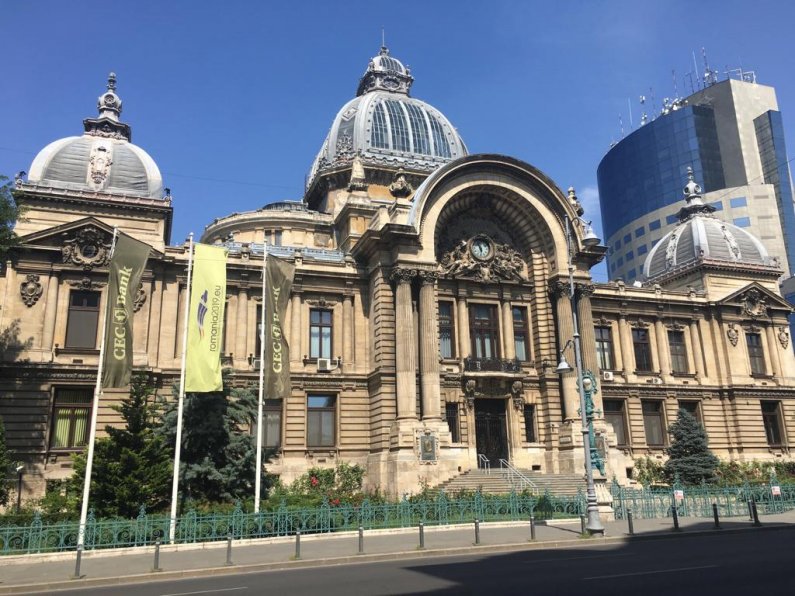
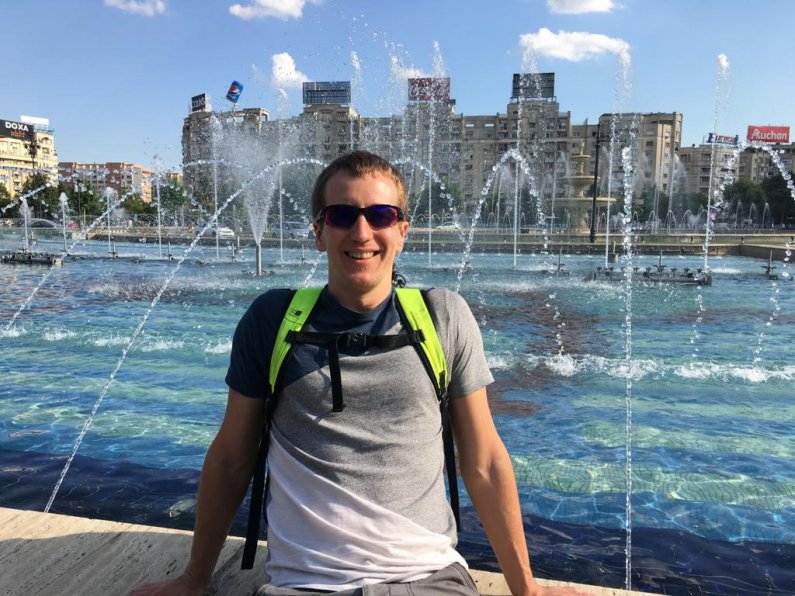
We stayed in an AirBnb called ‘Cozystay’ for the evening. Like many buildings/accommodations in Romania, the facade and interior communal areas (e.g. stairs) was covered in graffiti and had a slightly eerie Soviet-esque appearance but when we got to the room itself it was lovely.
Day 7 - Visiting Parliament Palace and Walking / Rowing Boat in the Parcul Regele Mihai
The Bucharest Palace of Parliament run tours most days where visitors can see some of the rooms inside the palace and enjoy the view over Bucharest from the balcony. It can be very popular so either call ahead to book your place or (if you leave things until last minute as we did) plan to get there for the 9am opening time and join one of the earliest tours which are generally less busy than those later in the day.
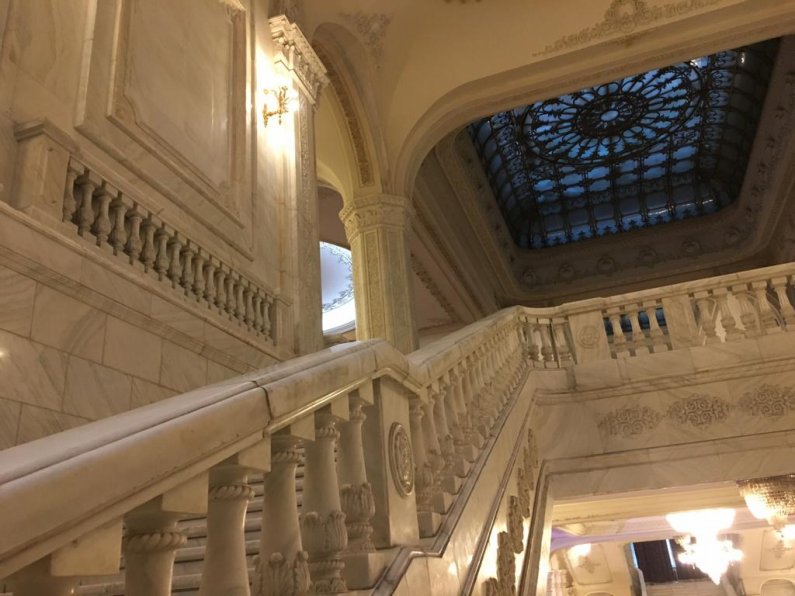
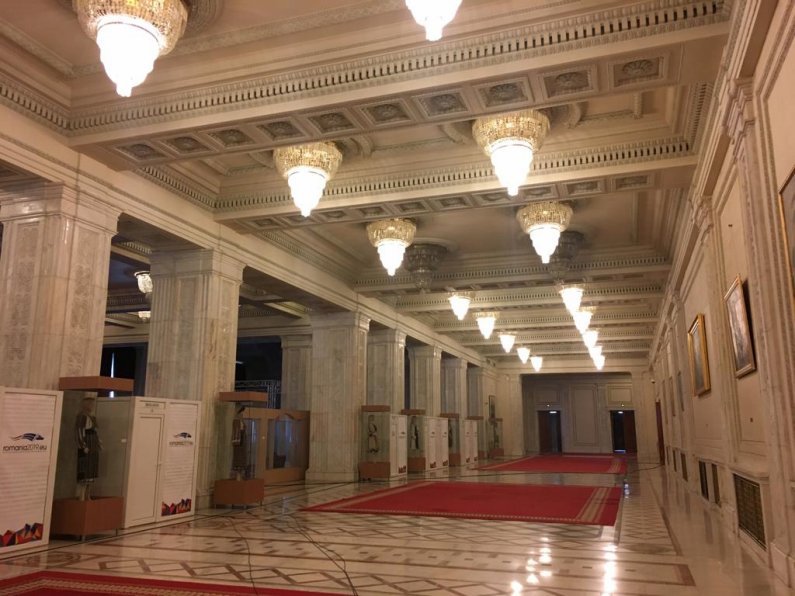

Our guide Francesco was great and shared with us some interesting stories and facts about the building, including:
- The palace is the heaviest building in the world - when you see the scale of the place and how much marble is used inside (1m tonnes) this is no surprise
- The official construction cost was 3bn EUR, unofficial estimates put it closer to 4bn EUR. 20,000 people were involved in the construction of the building
- Maintenance costs are 3m EUR p.a. Not that surprising when you consider the building has 1,100 rooms and 2,800 chandeliers
- The Palace has a height of 84 metres (276 ft) and a floor area of 365,000 square metres (3,930,000 sq ft). It is 240m long and 270m wide
- The palace construction makes it strong enough to withstand the earthquakes they have in the region
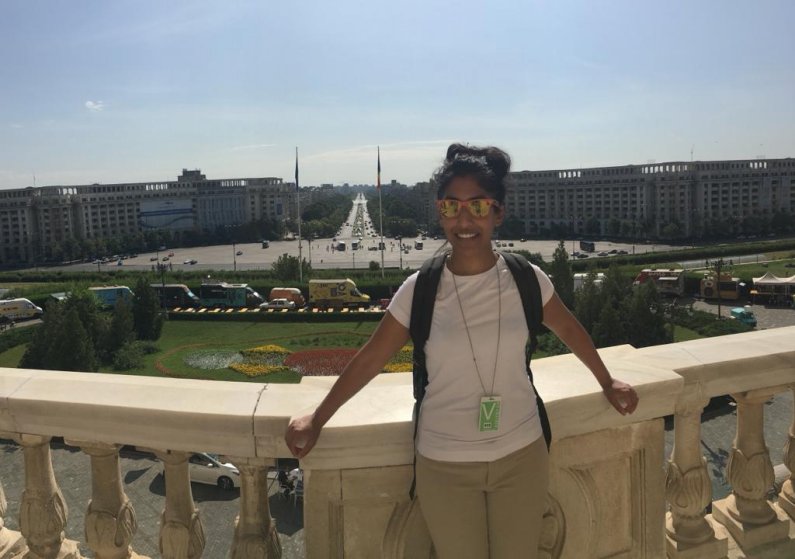
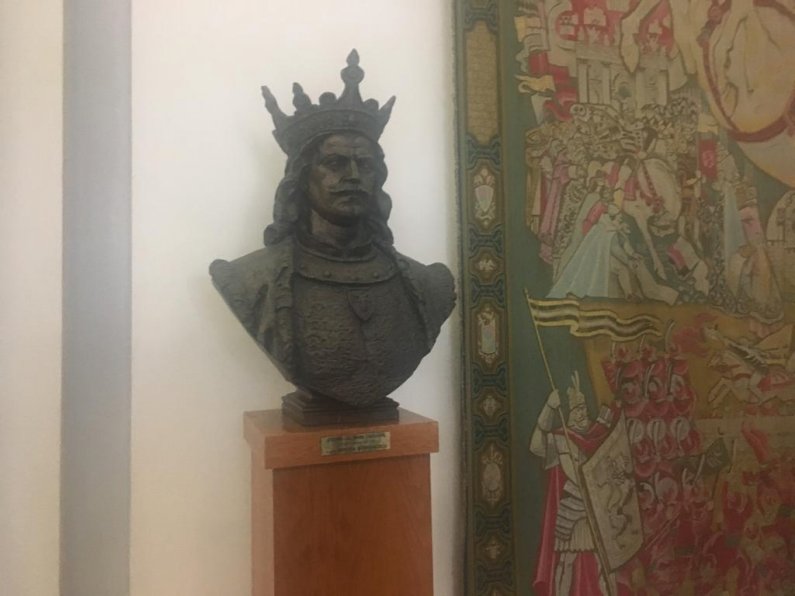
A good place to go for an evening meal or to visit during the day on the way back to the airport (as we did) is the Regele Mihai Park towards the north of Bucharest. In contrast to other parts of Bucharest in the CBD which are rather dirty and smelly, the park is cleaner, well maintained and has clean air. There is plenty of car parks around the edges of the park. It is centred on a lake with a number of lake-side restaurants. We decided to hire a rowing boat (only 10 lei or less than £2 per hour) - it’s possible to row around the lake in around an hour. We also saw lots of runners and cyclists around the lake - it’s probably around a 5km loop running and would make a great place to exercise for locals and tourists alike. There are smaller ice cream parlours available around the lake and spots to sunbathe on the grass in relative tranquillity.
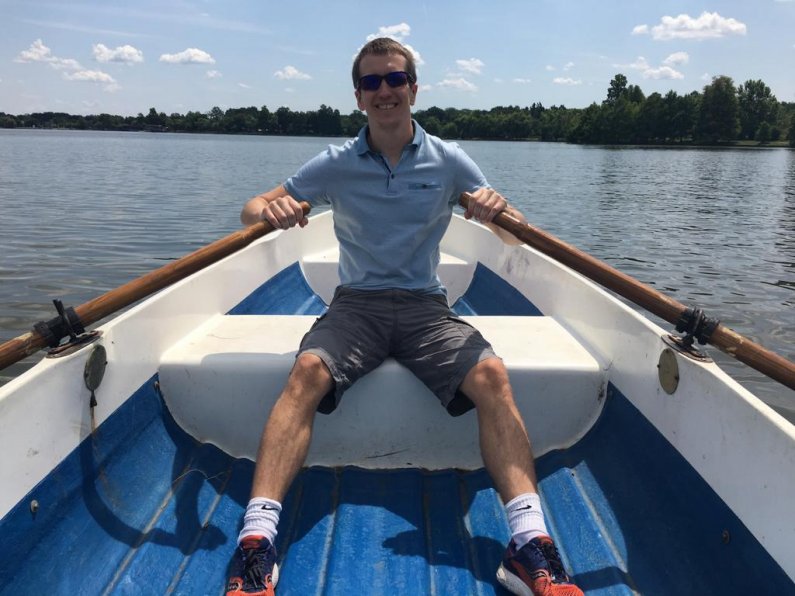
Holivity is sponsored by Jackson’s Online Garden Centre – your one stop shop for buying plants online. An active holiday does not have to be overseas in a different country. Taking a week or two of downtime in your own garden, planting up a new border, caring for your plant beds or working through gardening jobs can be equally as enjoyable, active and good for the body and mind.
